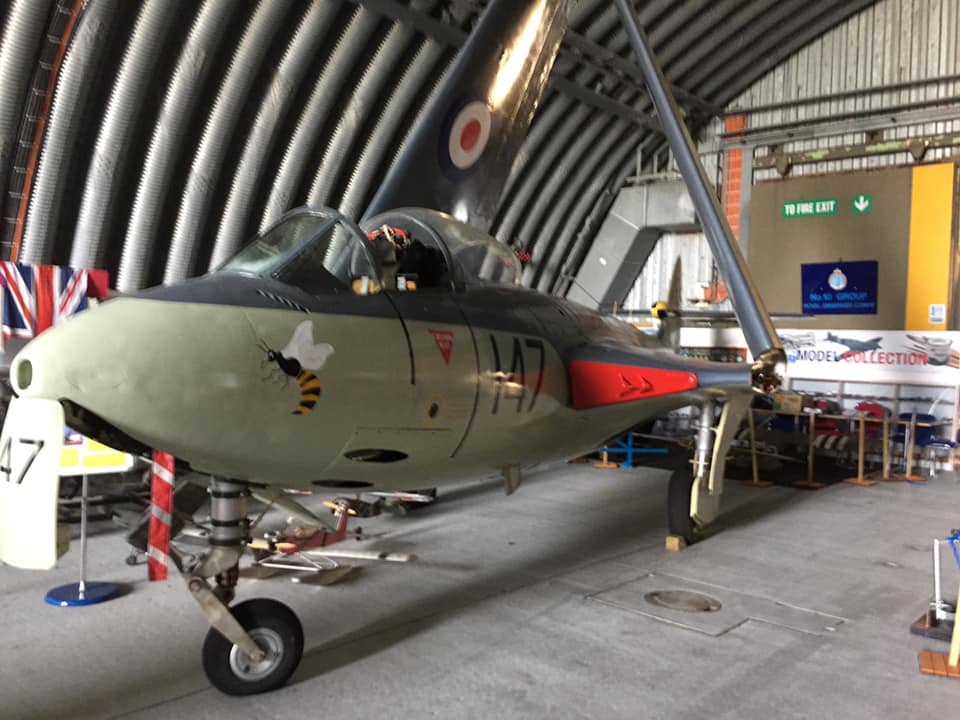Hawker Sea Hawk FGA6 – WV798



Specification
Technical Specification
- Crew: One
- Armament:
- Guns: 4 × 20 mm Hispano Mk V cannons (200 rpg)
- Rockets: 20 × 60lb or 16 × 5in unguided rockets
- Bombs: 4 × 500 lb (227 kg) bombs
- Other: 2 × 90 Imp gal (410L) drop tanks
Dimensions
- Length: 39 ft 8 in (12.09 m)
- Wingspan: 39 ft 0 in (11.89 m)
- Empty weight: 9,278 lb (4,208 kg) / Loaded weight: 13,220 lb (5,996 kg)
- Max. takeoff weight: 16,150 lb (7,325 kg)
Performance
- Powerplant: 1 × Rolls-Royce Nene 103 turbojet, 5,200 lbt
- Maximum speed: 600 mph (965 km/h)
- Range: 480 mi (770 km)
- Service ceiling: 44,500 ft (13,564 m)
Description
The Hawker Sea Hawk is a first generation, single-seat jet fighter and ground-attack aircraft that was designed for and operated by the British Fleet Air Arm (FAA) as well as the navies of several other nations. The first prototype flew in 1947 with the first production Sea Hawk F.1 (WF143) taking to the air on 14th November 1951. The aircraft entered service with the Royal Navy in 1953 and served with the Fleet Air Arm and Fleet Requirements Units until 1969.
The Sea Hawk was particularly useful in the era of naval early jet operations because of its relatively long range compared to other jet-types and also the variety of ground attack weapons it could utilise. The Royal Navy operated its Sea Hawks extensively during the 1956 Suez crisis when its weapon-load, range and versatility came to the fore. The Indian Navy also put their Sea Hawks into action during their conflict with Pakistan.
